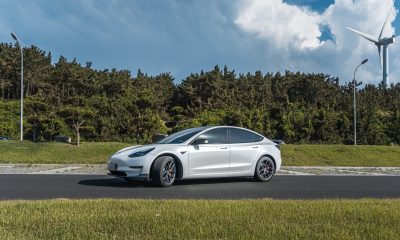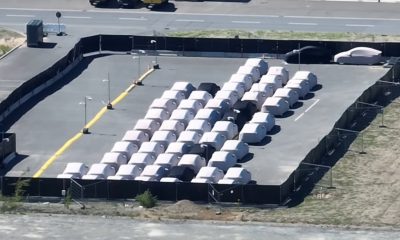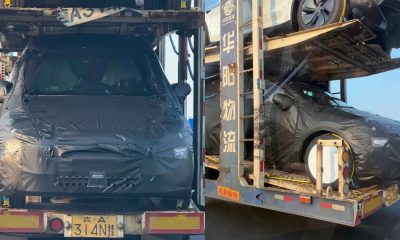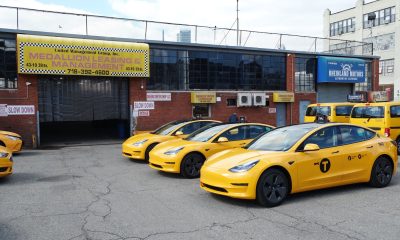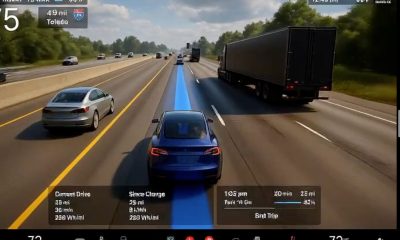News
Behind the Tesla and Elon Musk Attacks: Big Energy and Conservative Groups
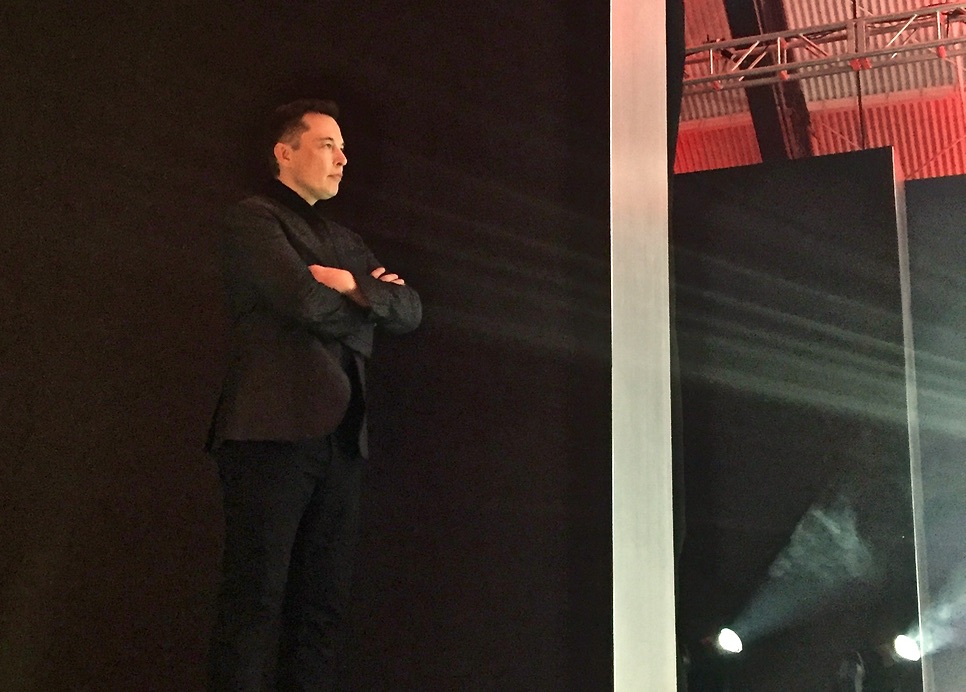
Elon Musk and Tesla Motors have their share of detractors, some of whom have become more vicious than usual as of late. According to a recent article published by The Drive, focused attacks on Tesla and SpaceX emanate from conservative group Citizens for the Republic. CftR is an organization founded in 1977 by Ronald Reagan that calls itself ” a national organization dedicated to revitalizing the conservative movement.” Its stated mission is to “ferret out corruption that wastes taxpayer dollars and continually undermines the American people in favor of the powerful and profitable.” CftR lists its national chairman as Laura Ingraham, a right wing pundit and possible press secretary for Donald Trump.
Musk and his various companies are frequently singled out as examples of taxpayer waste. CftR’s recent activity focuses on a website called Stop Elon From Falling Again whose motto is, “The One Stop Database On Stopping Elon Musk.” It claims “Elon Musk has defrauded the American Taxpayer out of over $4.9 Billion in the form of subsidies, grants, and other favors.”
One of CftR’s regular themes is that incentives promoting solar power are wasteful. “The solar industry has been a pet-industry of the Obama Administration and those who claim to care about the environment. Washington has given Solar companies millions in federal tax credits and subsidies that are costing taxpayers millions, despite posting losses year after year. When Solyndra, Ener1, and others get government tax breaks, the American people need to know. The US government needs to stop meddling in industries and create an atmosphere that allows to prosper without pledging taxpayer support.”
The group fails to mention an article in the New York Times from earlier this year that alleges fossil fuel companies get $4 billion a year in subsidies from the federal government. Nor does it include a reference to the finding of the International Monetary Fund earlier this year that fossil fuel interests receive more than $5 trillion in direct and indirect subsidies from governments around the world each year. When it comes to ferreting out wasteful government spending, people tend to overlook benefits that flow to activities they approve of — or are paid to promote.
Can anyone uncover who is really writing these fake pieces? Can't be skankhunt42. His work is better than this. https://t.co/Qs69AFMGE5
— Elon Musk (@elonmusk) November 22, 2016
Elon has good reason to be suspicious of his rivals. Earlier this year, the Koch Brothers whose total income from fossil fuel related business estimated at $115 billion let it be known they had created a special $10 million a year fund to induce media to run stories favorable to fossil fuels. It worked.
On March 7, Forbes ran a story entitled Forget The Gas Tax, Here’s How Policymakers Make Drivers Pay. The subtitle is, “CAFE standards are not an effective climate change policy; they are a meaningless gesture.” On the same day, Fortune ran a story entitled What Electric-Car Lovers Get Wrong About Fossil Fuels. On March 11, the Wall Street Journal ran an op-ed entitled Voters Should Be Mad at Electric Cars, sensationalizing it with a subheading “If Trump and Sanders fans hate absurd handouts to elites, the Tesla economy is the place to look.”
Also on March 11, The Herald Scotland ran this story: Time to get off the back of fossil fuels and show support rather than back daft divestment campaigns. “Koch Industries does not oppose electric vehicles,” said Philip Ellender, a spokesman for the company. “What we oppose is government subsidizing and mandating a particular form of energy over another. We oppose all subsidies – even for those industries in which we participate.”
Does that sound oddly similar to CftR’s line about how “The US government needs to stop meddling in industries and create an atmosphere that allows to prosper without pledging taxpayer support?” How about this statement from Donald Trump during the campaign? Last May, as reported by CNN, he told the press, “The government should not pick winners and losers, instead it should remove obstacles to exploration.” From Charles’ and David’s mouth to Trump’s ear, perhaps?
Yahoo says, “Musk attracts an unusually large and varied number of shrouded online attacks, including phony op-ed pieces, websites with shadowy backers, and individuals who hide behind aliases.” For whatever reason, some people have it in for Elon Musk and are hoping against hope to see him fail. That may be the reason why Tesla Motors is one of the most shorted stocks on Wall Street. Even analysts are divided into separate camps. The Motley Fool generally looks favorably on the company and its prospects for success. Seeking Alpha often takes a more pessimistic view.
In the digital world, truth and fiction are intertwined in a way that makes it hard for people to glean accurate information. Fake news is everywhere and may even have played a key role in the recent election according to the Washington Post. How does anyone know who or what to believe?
Let the trolls launch their slings and arrows Elon’s way. They will not deter him from moving towards his goal — a world where fossil fuels stay in the ground and abundant renewable electricity from the sun is the order of the day.
News
Tesla Model 3 hits quarter million miles with original battery and motor
The Model 3’s Battery Management System (BMS) shows a State of Health between 88% and 90%.
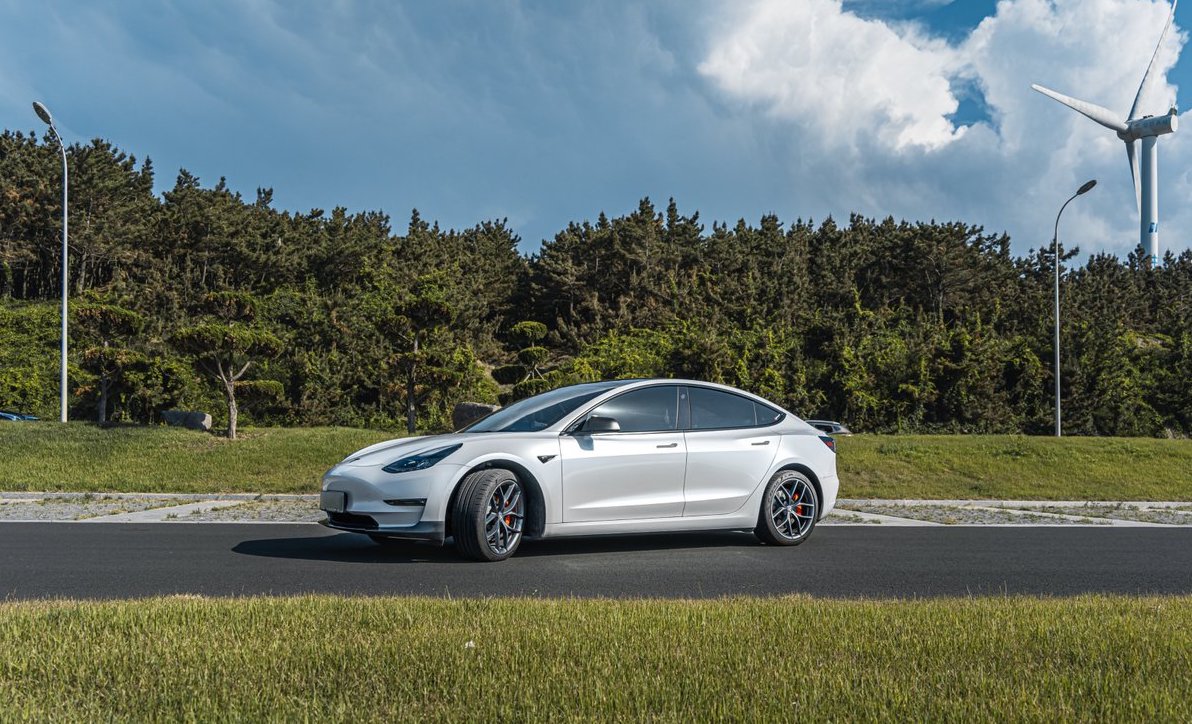
A Western Australian Tesla Model 3 has captured global attention after racking up an impressive 410,000 kilometers (254,000 miles) on its original battery and motor, while still retaining around 90% of its original battery health.
Long-term Model 3
The 2021 Model 3 Standard Plus, equipped with a 60 kWh lithium iron phosphate (LFP) battery, has been in constant use as an Uber rideshare vehicle. According to Port Kennedy EV specialist EV Workz, the car’s Battery Management System (BMS) shows a State of Health between 88% and 90%.
EV Workz owner Edi Gutmanis shared the findings on Facebook’s Electric Vehicles For Australia page on August 8, and the post quickly went viral. As per Gutmanis, the Model 3’s charging history shows 15,556 kWh delivered via DC fast charging (29% of the total) and 38,012 kWh via AC charging (71% of the total).
Gutmanis also broke down the fuel savings for the Model 3. A petrol car covering the same 410,000 km at 7L/100km and $1.70 per liter would cost an estimated AU$50,000 in fuel. By comparison, charging the Tesla using average commercial rates would be about AU$20,737 and just AU$13,000 if using Western Australia’s EV tariff. That’s a potential refueling saving of roughly $37,000, not including the avoided maintenance costs of an internal combustion engine.
Simple fix
The car came into EV Workz for a driveline “judder” issue, as per a report form EV Central Australia. Gutmanis found the real cause was simply worn motor mount bushes. After seven hours of labor and $130 in parts, “the car drives just as good as the first day it left the dealership,” Gutmanis said.
Gutmanis, whose business also performs EV conversions on classics and 4x4s, says the results aren’t surprising. “We expect this sort of longevity with EV batteries,” he explained, though this is the highest-mileage Model 3 he has encountered in Australia.
News
Mysterious covered Tesla Model Y fleet spotted in Giga Berlin
The vehicles were sighted during a recent drone flyover of the Germany-based Model Y production site.
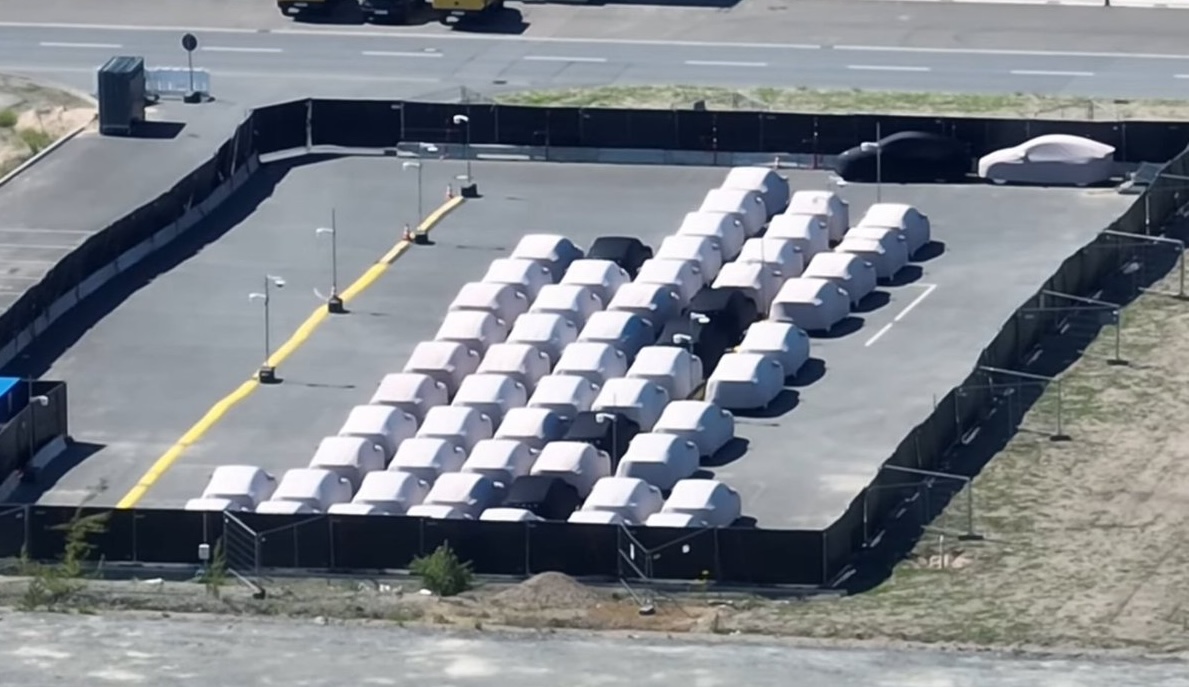
A fleet of mysterious covered Model Y units has been spotted at the Giga Berlin complex. The vehicles were sighted during a recent drone flyover of the Germany-based Model Y production site.
A mysterious fleet
The mysterious Model Y fleet was sighted by longtime Giga Berlin watcher Tobias Lindh, who has been chronicling the progress and activities of Tesla’s German factory complex for years. During his flyover on August 12, 2025, Lindh noted that he was able to spot a fleet of fully covered Model Y units being gathered in one section of the Giga Berlin site.
The presence of the covered Model Y units caught a lot of attention online, with numerous Tesla watchers speculating if the vehicles were the Model Y L or the yet-to-be-released Model Y Performance. Giga Berlin only produces Model Y units, after all, and both the Model Y L and Model Y Performance are yet to be rolled out by the electric vehicle maker.
Tesla Model Y Performance the Model Y L
The Model Y is Tesla’s best-selling vehicle by a mile, selling so well that it was able to become the world’s best-selling car by volume in 2023. With the changeover to the new Model Y this year, Tesla has only released the vehicle’s updated RWD and AWD versions. The updated Model Y Performance is yet to be released as of writing, though sightings of apparent Model Y Performance units have been reported on social media.
In recent weeks, however, the Model Y news cycle has been dominated by the upcoming release of the Model Y L, an extended wheelbase, six-seat version of the best-selling all-electric crossover. The Model Y L is expected to be produced in Giga Shanghai initially, though Giga Berlin, the Fremont Factory, and Giga Texas are also expected to produce the variant in the near future.
Check out Giga Berlin’s mysterious Model Y fleet in the video below.
News
Ukraine completes first Starlink direct-to-cell test in Eastern Europe
The trial was announced by the Ministry of Digital Transformation and Kyivstar’s parent company Veon, in a press release.

Ukraine’s largest mobile operator, Kyivstar, has completed its first test of Starlink’s Direct to Cell satellite technology, enabling text messages to be sent directly from 4G smartphones without extra hardware.
The trial was announced by the Ministry of Digital Transformation and Kyivstar’s parent company Veon in a press release.
First Eastern Europe field test
The Zhytomyr region hosted the pilot, where Deputy Prime Minister Mykhailo Fedorov and Kyivstar CEO Oleksandr Komarov exchanged texts and even made a brief video call via Starlink’s satellite link in northern Ukraine’s Zhytomyr region.
Veon stated that the test marked Eastern Europe’s first field trial of the technology, which will allow Kyivstar’s 23 million subscribers to stay connected in areas without cellular coverage. The service will debut in fall 2025 with free text messaging during its testing phase.
“Our partnership with Starlink integrates terrestrial networks with satellite platforms, ensuring that nothing stands between our customers and connectivity – not power outages, deserts, mountains, floods, earthquakes, or even landmines,” Veon CEO Kaan Terzioglu stated.
Starlink in Ukraine
Kyivstar signed its Direct to Cell agreement with Starlink in December 2024, about a year after a major cyberattack disrupted service and caused nearly $100 million in damages, as noted in a report from the Kyiv Independent. Starlink technology has been a pivotal part of Ukraine’s defense against Russia in the ongoing conflict.
“Despite all the challenges of wartime, we continue to develop innovative solutions, because reliable communication under any circumstances and in any location is one of our key priorities. Therefore, this Kyivstar project is an example of effective partnership between the state, business, and technology companies, which opens the way to the future of communication without borders,” Mykhailo Fedorov, First Deputy Prime Minister of Ukraine, said.
-
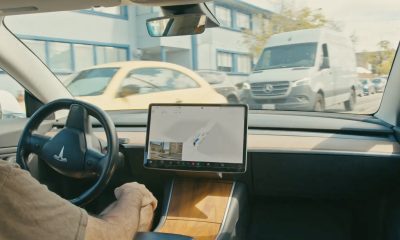
 Elon Musk1 week ago
Elon Musk1 week agoElon Musk teases crazy new Tesla FSD model: here’s when it’s coming
-

 Elon Musk5 days ago
Elon Musk5 days agoElon Musk confirms Tesla AI6 chip is Project Dojo’s successor
-
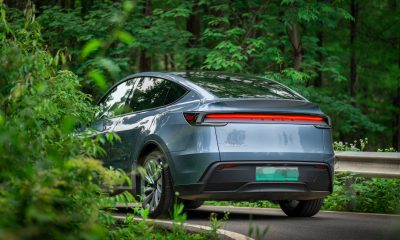
 News5 days ago
News5 days agoTesla Model Y L reportedly entered mass production in Giga Shanghai
-
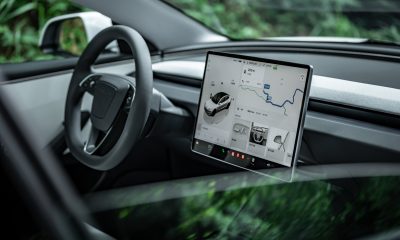
 Elon Musk6 days ago
Elon Musk6 days agoTesla CEO Elon Musk details massive FSD update set for September release
-
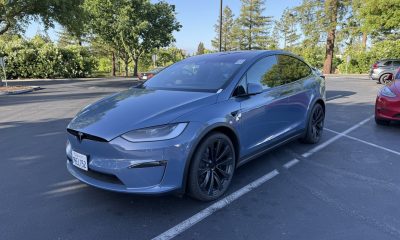
 News2 weeks ago
News2 weeks agoTesla takes first step in sunsetting Model S and X with drastic move
-

 Cybertruck5 days ago
Cybertruck5 days agoTesla’s new upgrade makes the Cybertruck extra-terrestrial
-
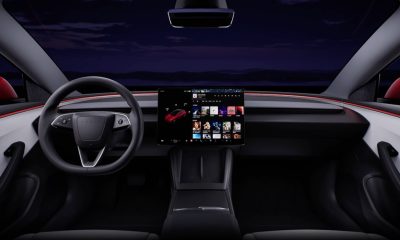
 Lifestyle2 weeks ago
Lifestyle2 weeks agoTesla brings perhaps the coolest interior feature to cars in latest update
-

 News3 days ago
News3 days agoElon Musk reaffirms Tesla Semi mass production in 2026


